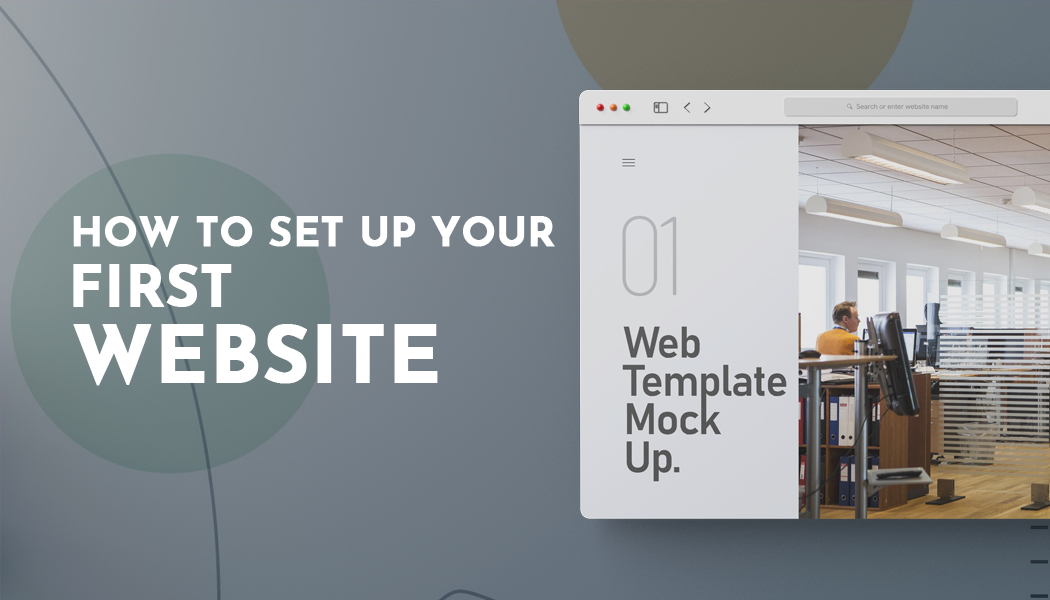How To Set Up Your First Website
Whether you’re a small business owner or an individual looking to make an impact, setting up a website is a great idea. Having a website means your customers will take you more seriously as a brand, and it gives you control over your brand identity and narrative, which is crucial when it comes to marketing. However, if you’re a total novice when it comes to setting up a website, then you might not know what you’re doing or even where to start. That’s where we come in. Here’s how you can set up your first website.
Research others’ websites first
If you want to know what a high-quality, professional website looks like, then it stands to reason that you should research others’ websites and gather information that way. Pick some of the biggest companies out there and take a look at their brand pages. You’ll usually find they adhere to certain organisational principles; they often espouse minimalist design and clever use of space, preferring to project an air of control over simply disgorging information. Of course, there’s no “right” way to build a website, as it’s a creative endeavour, but you can get a decent idea of what goes into it if you look at others’ pages.
Build a budget
While it is possible to build a website for free, if you want to create a truly unforgettable and long-lasting page, you’re probably going to need to pay. Whether you’re paying for a premium subscription to a web hosting service or hiring a web professional to do the work for you, having some money in the bank will stand you in good stead when it comes to creating a professional website. If you’re short on money, don’t worry; it doesn’t need to cost too much. Even a £1000 loan can help you to build a website that you can be proud of, and then you can use the proceeds you get when your brand is successful to pay the loan back!
Choose a strong domain name
Your domain name is what people will see when they type your brand’s name into a search engine. While most web browsers don’t necessarily need users to type in full domain names anymore, you will still see the domain name in the address bar, so customers will come to indelibly associate your domain name with your brand. As such, you should pick something snappy and indicative of your brand values. It doesn’t even necessarily need to be your brand name; you could choose something clever that riffs on your name, for example, or use a corporate slogan for your website domain name. Either way, make sure you pick something memorable.
Start creating
If you’ve ever listened to a podcast, then you’ve almost certainly heard an ad for website building and hosting service Squarespace. You can use that to help you build your website, but there are other alternatives, like Wix or WordPress, that you can use instead if you don’t like Squarespace’s user interface. These tools usually make it extremely simple to build a functional, attractive website; they’ve often got drag-and-drop interfaces that mean you don’t need to learn a single line of code if you want to make something beautiful. As such, you can usually arrange elements exactly as you want them without needing any web design expertise whatsoever. If you’re a first-timer, we’d recommend using a tool like this instead of coding.
Choose a host
Just like website building tools, there are also many web hosting services out there that will help you to establish your domain. These include GoDaddy, HostGator, and InMotion, among others. Each of them will serve you better or worse depending on your personal needs, so it’s definitely worth doing thorough research to see which one would be best for you. Depending on the platform on which you’ve built your site, certain hosting options may look more or less appealing as well, so make sure you’ve incorporated that factor into your research. Don’t be afraid to look for help with choosing a web hosting service if you need it!
Upload your site
If you’ve used Squarespace or a similar tool, you can probably skip this step; the service will usually share your website’s files with your chosen hosting service, making things a lot easier for you. If, however, you’ve procured the services of a web design professional, they may supply you with the files for your site instead of sending them directly to the hosting service. If this happens, you’re going to need an FTP client (file transfer protocol client), which will transfer your website’s files to a host server. These include SmartFTP or Filezilla, and just like with web hosting services, there are better and worse options depending on your needs. You will probably be able to move past this step comfortably, though.
Keep refining your site
It’s best to think of your website as a constantly evolving entity rather than something static and fixed. As time goes by, you’ll likely keep returning to your website and incrementally improving it; you may notice that certain things aren’t sitting well with you or that you’d like to change something you’d previously thought was a good idea. Don’t be afraid to do this; a website should reflect the values of its brand as best it can, and if you identify any areas in which this is no longer the case, it’s important that you rectify that issue before it potentially turns customers away from you and towards a competitor.




